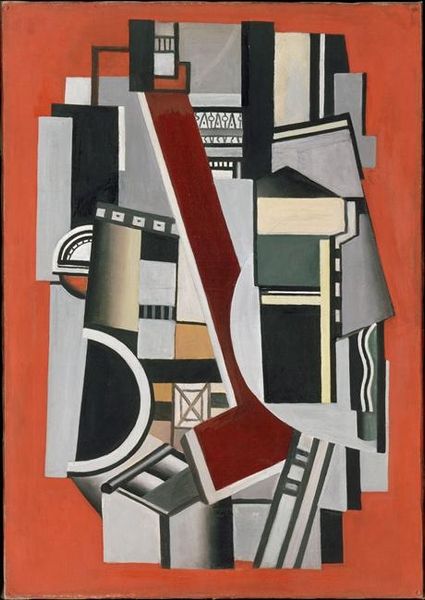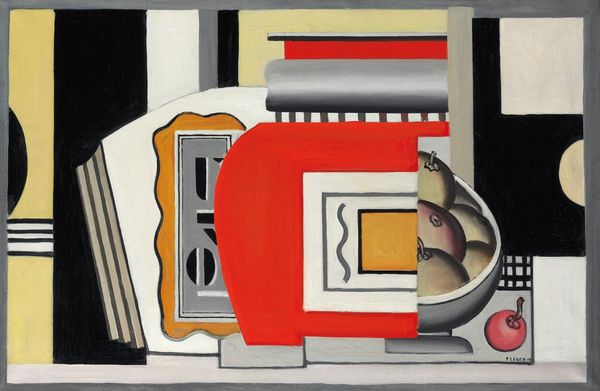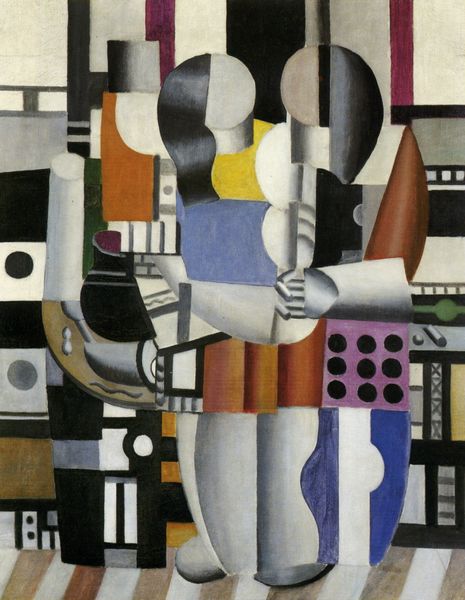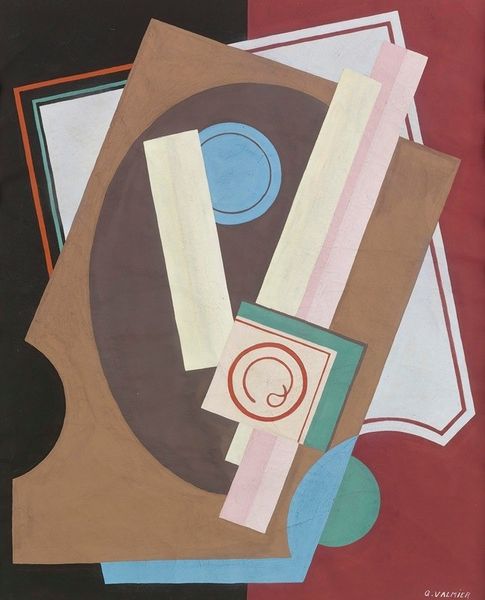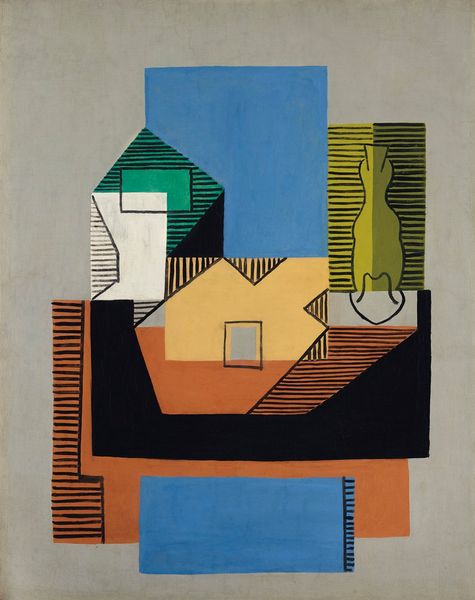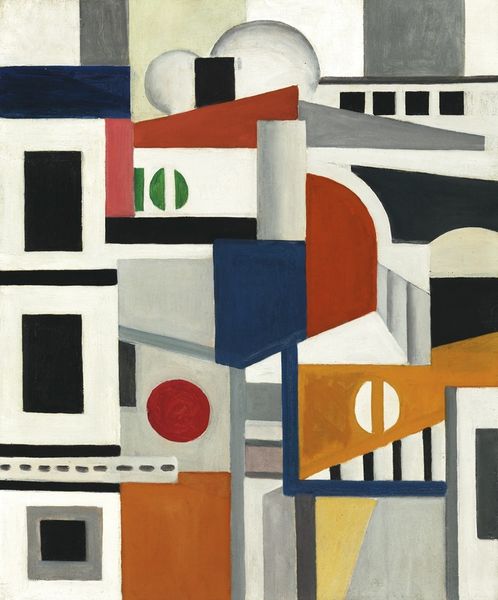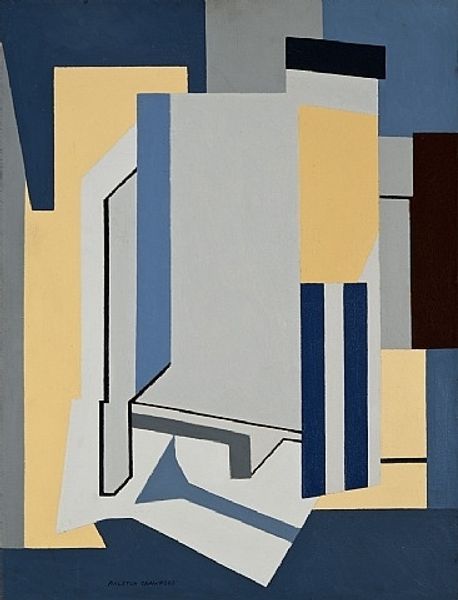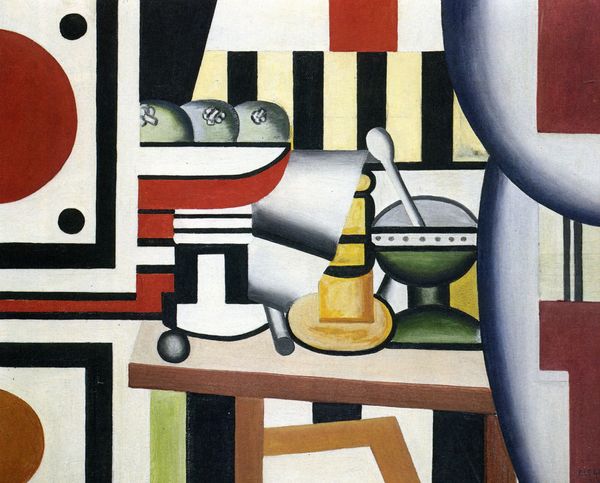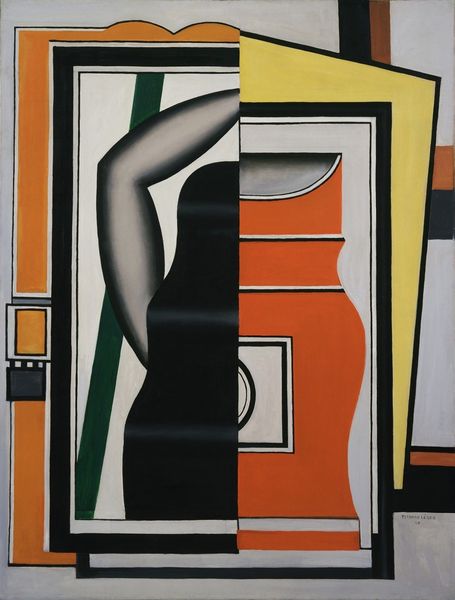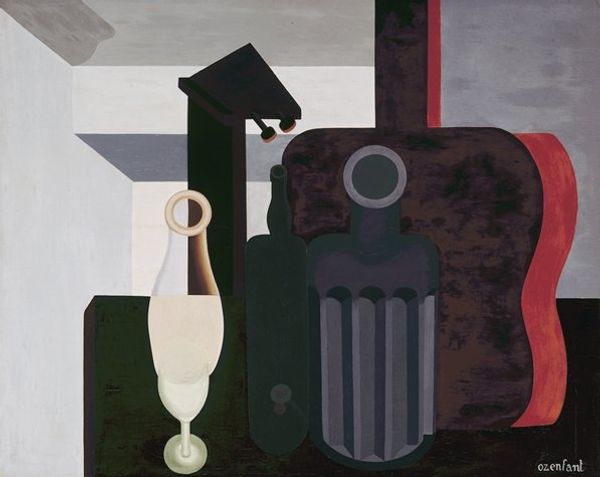
painting, oil-paint
#
cubism
#
painting
#
oil-paint
#
abstract
#
geometric-abstraction
#
cubist
#
modernism
#
cubism
Copyright: Modern Artists: Artvee
Fernand Léger created this painting, titled "The Baluster" in 1925. Here, a stylized baluster—a familiar architectural form supporting railings and structures—takes center stage. The baluster, often associated with classical architecture, evokes ideas of stability, order, and tradition. Think about the columns of ancient Greek temples or the grand staircases of Renaissance palaces, where the baluster played a vital role. These forms are deeply embedded in our collective memory. Consider how the image of a column or pillar appears in various contexts. It represents support, strength, and connection to the past, yet its meaning shifts. The baluster appears here in Léger's painting in a fractured, abstracted form, its classical associations juxtaposed with a modern, industrial aesthetic. This evokes the psychological tension between the comfort of tradition and the unease of progress. The image has transformed across time, resurfacing, evolving, and carrying new meanings.
Comments
No comments
Be the first to comment and join the conversation on the ultimate creative platform.
